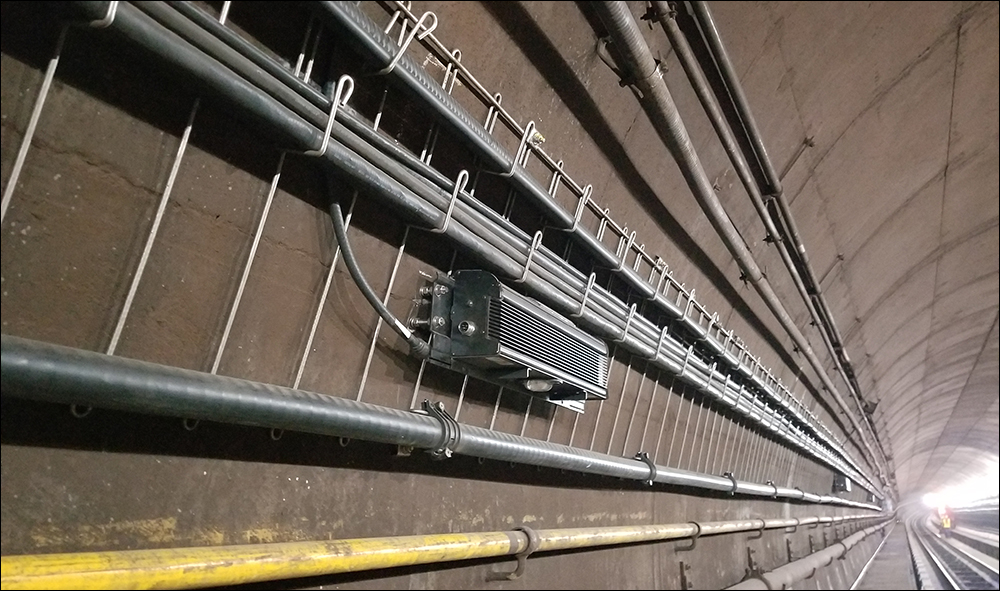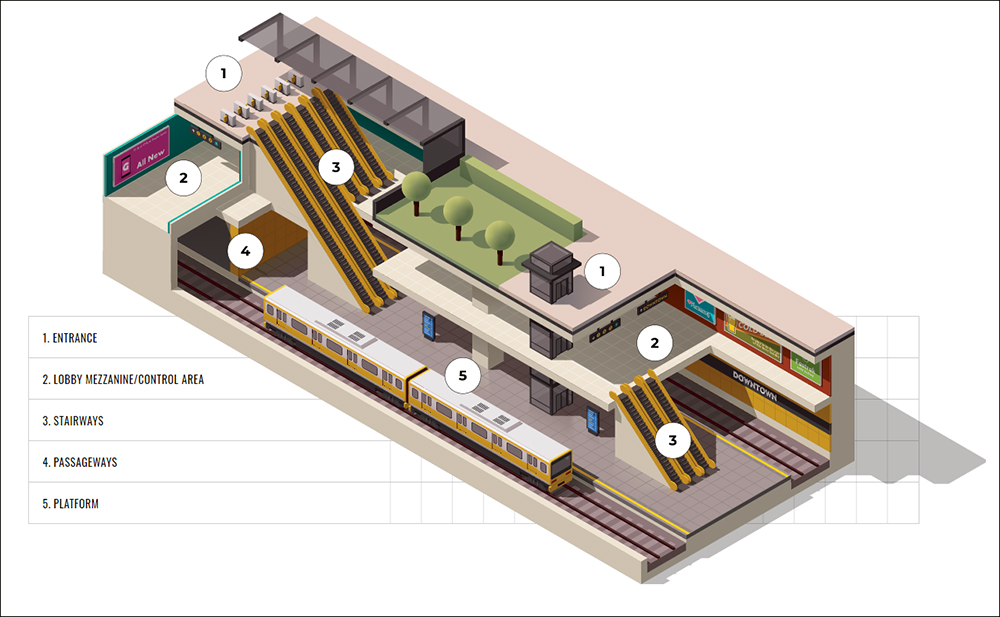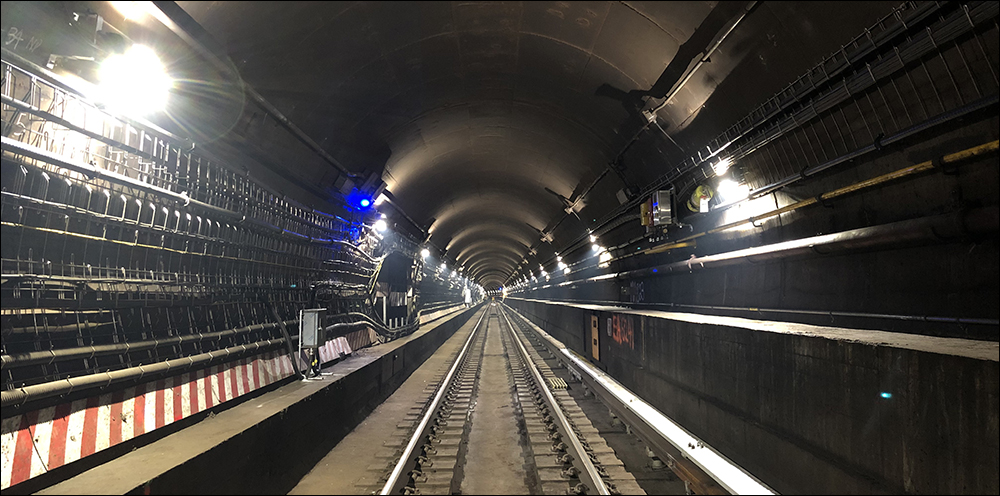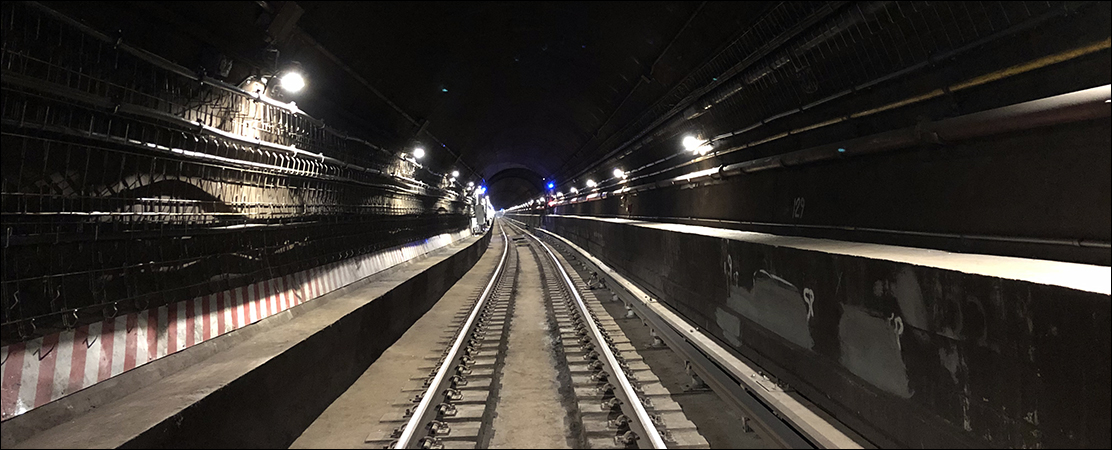New York’s Metropolitan Transportation Authority (MTA) has installed an Internet of Things (IoT)-based solution to automate emergency lighting management in its F Line Rutgers Tube. The solution, known as ClearNET, is provided by Clear-Vu Lighting and follows a similar deployment in New York’s L Train tunnel. The proprietary wireless mesh network captures data regarding the status of Clear-Vu’s LED tunnel light fixtures to ensure they are operational. It also enables two-way remote control so emergency lighting can be switched to OSHA level lights, while providing connectivity for other sensors.
The ClearNET wireless mesh system consists of 2,000 nodes deployed along the 2-mile length of tunnel, which monitor their own functionality and battery status, then forward that data to a gateway for real-time access by the MTA. The solution, developed with the support of the New York State Energy Research Development Authority (NYSERDA), was taken live in the Rutgers Tube—the section of the F Line that travels between Manhattan and Brooklyn—in late October 2021.

The Rutgers Tube has been undergoing rehabilitation work due to flooding that occurred in 2012 during Hurricane Sandy. For the renovation, which began last year, the MTA opted to upgrade the emergency lighting, as well as include wireless connectivity to ensure the system would work properly at all times. “There was a desire to have a system that is automatically being monitored,” says Daniel Lax, Clear-Vu Lighting’s CEO.
Lighting is critical for emergency evacuations, Lax explains, especially in tunnels. In the event of storms, fires or technical or equipment failures, passengers, operators and emergency responders need to find their way out on foot. However, tracking each fixture’s functionality poses a major challenge for the MTA, which has tens of thousands of fixtures throughout many miles of New York City tunnels. Traditionally, this was a manual process by which employees periodically entered the tunnels to push buttons, switch on lights and thereby test the functioning of the emergency batteries.

Daniel Lax
In general, tunnel traction power is provided by a third rail—a continuous, rigid conductor located either alongside or between the rails of the tracks that supplies direct current electricity to the trains. Emergency lighting typically comes from a different source. During an emergency, the power rail must often be turned off for safety purposes. Thus, emergency lighting requires its own power supply. Clear-Vu offers a battery-powered LED light that uses the IoT connectivity to allow operators access to each fixture, even if they are not in the tunnel.
Subway tunnels are inherently challenging for wireless systems. As Lax explains, “You have a 600-volt third rail conductor [creating electromagnetic interference], damp steel dust-filled tunnels with curves and elevation changes, and you have a mile-long piece of steel [a train] blocking the whole path every 90 seconds.” Therefore, Clear-Vu had to design a system that could capture and transmit data throughout the entire tunnel, without interference. The MTA had looked into a Zigbee-based system, but Lax says that technology cannot manage data culled from more than approximately 120 sensors.
The MTA required a chain or string configuration with more than 1,000 fixtures along a 2-mile tunnel. Clear-Vu thus developed a proprietary active RF system that acts as a mesh network using 900 MHz, which does not interfere with the 2.4 GHz technology used by the signal systems. Each light fixture comes with a wireless node that transmits data to area nodes, and back to a gateway on either end of the tunnel. The lighting company claims ClearNET is the first IoT-based wireless monitoring and control system designed specifically for emergency lighting and mission-critical life-safety assets in subway tunnels.

ClearNET is a communication channel to monitor and control transit system assets and environments.
Clear-Vu first deployed its ClearNET system in the L Train tunnel, between 1st Avenue and Bedford Station (known as the Canarsie Line), with funding from NYSERDA. Altogether, 1,300 of its MTL X LED fixtures were implemented along the L Line, while 700 fixtures were added to the Rutgers Tube. At both sites, the ClearNET system incorporates remote asset management via wireless monitoring of each fixture and its battery health. “We also made a dual-function light,” Lax states, enabling the technology to provide NFPA 130 standard light levels for emergencies in the event of an incident, or higher lighting levels for maintenance crews.
Once the technology proved to be successful with the MTA, Clear-Vu began looking into how it could be expanded beyond simply monitoring lighting. The company added temperature-monitoring sensors that could use the same mesh network to send data to a server regarding temperature changes for fire detection. If a work order for maintenance is received, the fixtures can be remotely set to remain on for a specific number of hours in the area of work. The system can also provide power and monitoring for other technologies.
The MTA has piloted an ultra-wideband (UWB) system from Piper Networks and Humatics for train signals on the Flushing and Canarsie (L Train) lines. The solution can provide precise positioning of trains as they make their way through tunnels, employing a UWB transponder on a train, as well as wayside beacons installed in the tunnel to transmit UWB data to those transponders. These wayside beacons require low-voltage DC power. At the Rutgers Tube, the ClearNET emergency light fixtures were already battery-powered and wirelessly connected, so the UWB gateways could be plugged directly into the LED fixtures’ auxiliary output. “Now we are providing wirelessly monitored power to the beacons,” Lax says.

Typically, the fixtures are installed at every 15 feet of the tunnel to provide full coverage of emergency illumination. The solution is designed to be managed by cloud platform software so data can be collected wirelessly and managed on an Intranet or Internet server. “Different agencies have different requirements,” Lax notes, so the technology is flexible. Because the network can support a wide variety of systems with low data set, Lax says other features could be added to the infrastructure as well, such as methane, moisture or radiological sensors. These could be deployed at every 10 fixtures, for example.
The LED fixtures’ batteries are designed to last for more than a decade. Emergency lighting typically uses low-cost nickel-cadmium batteries, but they are not designed for the thermal fluctuations in tunnels. Additionally, lithium batteries are too combustible for tunnels. Instead, Clear-Vu employs military-grade nickel metal hydride batteries to sustain such fluctuations. The battery life is considerable, the company reports, in part because the fixtures are only used for lighting during emergencies.
Based on lighting alone, Lax says, the ClearNET system could provide a transit agency with operational savings of $2.7 million, based on a reduction in materials for temporary lighting, as well as redundant and proprietary cable systems for fire protection, maintenance labor for inspections, and electricity savings. The safety benefits would be more difficult to measure, he adds. Clear-Vu now has pilots underway at several other transit agencies, both in the United States and internationally.


